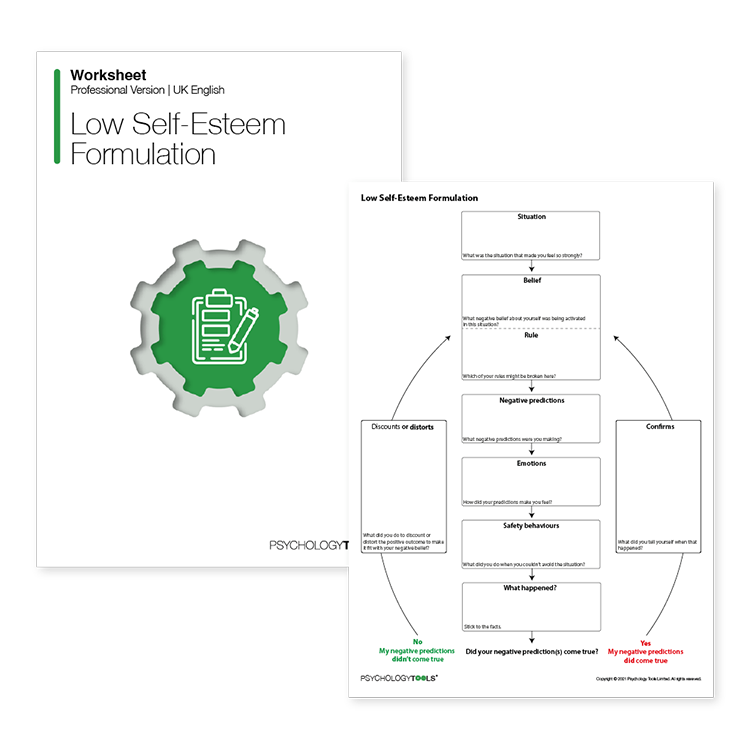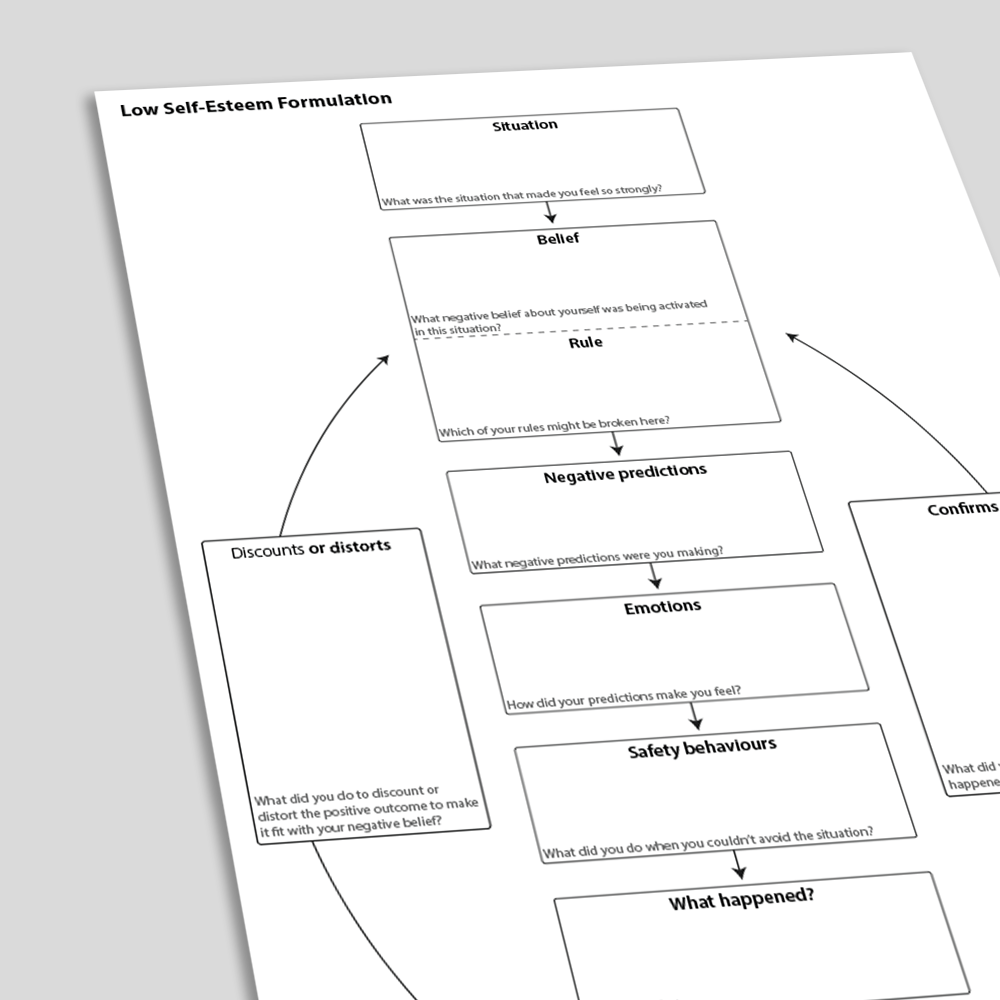Low Self-Esteem Formulation
Download or send
Tags
Languages this resource is available in
Problems this resource might be used to address
Techniques associated with this resource
Mechanisms associated with this resource
Introduction & Theoretical Background
At the core of low self-esteem are negative beliefs or judgements about the self, which persist despite seemingly contradictory evidence. Melanie Fennell draws upon Christine Padesky’s metaphor to describe negative beliefs in low self-esteem as being analogous to prejudices: unfair and ill-informed. Fennell argues that information relating to the negative beliefs may be subject to perceptual and interpretation biases:
- Perceptual bias: Information that is consistent with one’s beliefs is readily accessible and easily processed, whereas data inconsistent with the negative belief is ‘screened out’.
- Interpretation bias: Information that is perceived is biased towards the negative belief. Ambiguous data is interpreted negatively, and positive or neutral data is distorted to fit. Negative data is “attributed to enduring flaws or weaknesses”.
Fennell proposes that negative beliefs in low self-esteem are perpetuated by a sequence in which:
- Negative beliefs are activated by situations in which rules and standards are threatened.
Therapist Guidance
“Surprisingly, people with low self-esteem often continue to think badly of themselves despite having achievements and successes. Would you be willing to help me to understand more about what happens when you have successes and setbacks?”
1. Situations
Situations in which our rules or personal standards might be broken are often the most triggering. For example, if someone has the rule “I’m OK as long as I’m not criticized”, situations where they might get feedback from other people can be particularly stressful for them.
- Can you think of a recent situation that made you feel particularly anxious?
- Can you think about a recent situation when you gave yourself a hard time?
2. Beliefs & rules
Our positive and negative beliefs about ourselves are based on the things that have happened to us. These beliefs are often expressed in the form “I am …”, as if it is
References And Further Reading
- Fennell, M. J. (1997). Low self-esteem: A cognitive perspective. Behavioural and Cognitive Psychotherapy, 25(1), 1-26.
- Padesky, C. A. (1990). Schema as self-prejudice. International Cognitive Therapy Newsletter, 6(1), 6-7.




